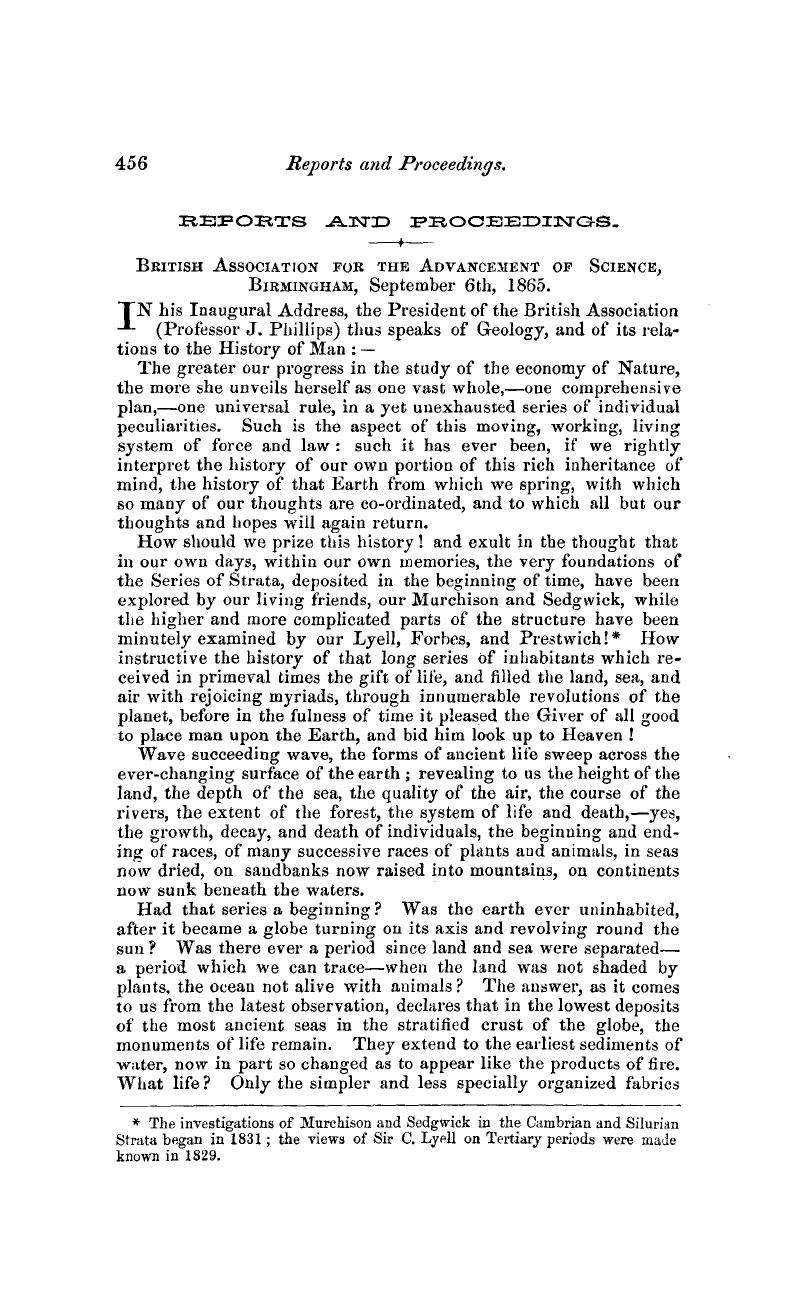No CrossRef data available.
Published online by Cambridge University Press: 01 May 2009

page 456 note * The investigations of Murchison and Sedgwick in the Cambrian and Silurian Strata began in 1831; the views of Sir C. Lyell on Tertiary periods were made known in 1829.
page 457 note * See the Memoirs of Lartet, M. on the Caves of the Dordogne, 1863–1864.Google Scholar
page 457 note † In the caves of Gower, Devon, and Somerset, flint flakes occur with several extinct animals.
page 458 note * Gallie of Beligian on the south-east coast; Iberian in South Wales; German at the foot of the Grampians.—(Tacitus, Vita Agricolæ.)
page 458 note † ‘Britanniæ pars interior ab iis incolitur, quos Datos in insula ipsa memoria proditum dicunt.’—(Cæsar, v. 12.)
page 459 note † Prestwich, Transactions of the Royal Society, 1860, and Proc. of Roy. Inst., 02. 1864.Google Scholar
page 459 note ‡ Pengelly, Reports of the British Association, 1864.Google Scholar
page 459 note § The late Dr. Hugh Falconer, whose knowledge of the fossil animals of cares was remarkably exact, took a great share in these examinations.
page 460 note * Max Müller on the Science of Language.
page 461 note * On the Origin of Species, 1859.Google Scholar
page 461 note † See the remarkable Essay of Forbes, E. on the distribution of the existing Fauna and Flora of the British Isles, in Memoirs of Geol. Survey of Britain, vol. i. p. 336.Google Scholar
page 463 note * The work of Geikie, recently published, and entitled ‘The Scenery of Scotland viewed in connexion with its Physical Geology,’ is an admirable illustration of that author's descriptive powers. Though I am opposed to his view of the original formation of valleys and deep depressions by rivers and the atmosphere, I quite agree with him as to the great effect produced by glaciers when that mountainous region was covered by snow and ice.